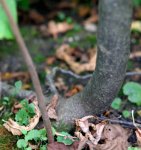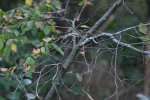I have a bunch of chokecherries in an overgrown, weedy part of the yard. They aren't very healthy, due to being in a shady area, I think, so I was thinking of collecting some. Even if they don't make it, I don't think they'll survive much longer where they are so it's not a big loss.
How are chokecherries as bonsai? I can find very little on them. I've found a few places saying they are good for bonsai, but have yet to find a single photo of a finished bonsai chokecherry. All I've been able to turn up are a few photos of prebonsai.
How are chokecherries as bonsai? I can find very little on them. I've found a few places saying they are good for bonsai, but have yet to find a single photo of a finished bonsai chokecherry. All I've been able to turn up are a few photos of prebonsai.



